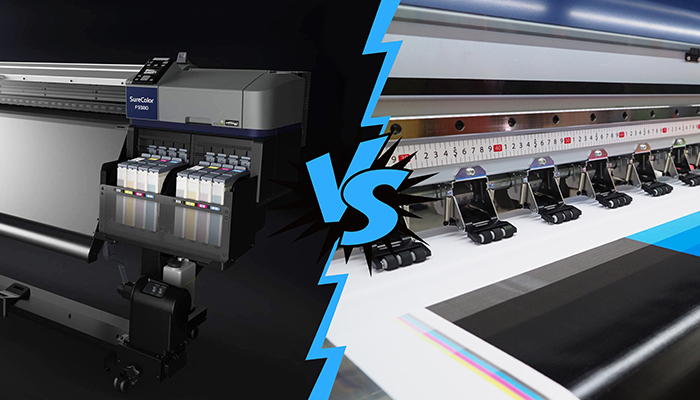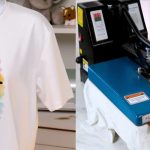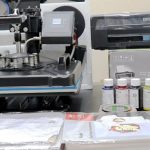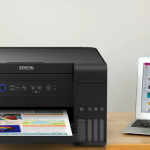Do you want to level up your garments-decoration business, but you have no idea which printing tool is best for you? Have you trapped between sublimation vs. vinyl printing? I can understand your worry because I was the same in your place when I started my business. There was no one to guide me about the perfect tools and materials. Thankfully I learned all by myself, and now I am successfully running my business. So I decided to help you out in this situation regarding choosing the perfect printing method.

You can use various methods, but we get confused about heat sublimation printing and heat transfer vinyl methods. Both printing methods are great and come with extraordinary features. Each printing method has some pros and cons, which I will discuss in this review. Keep reading this review till the end to know about the sublimation vs. vinyl printing method.
Sublimation vs. Vinyl
Table of Contents
Sublimation Printing
Sublimation printing is a type of printing that requires special ink and paper. With the use of heat, the sublimation printer converts dye or ink on a piece of fabric. You can use sublimation printing to transfer high-quality images on fabric like t-shirts and clothes. Usually, polyester fabric is best for this printing method.
A sublimation printer works best on light fabrics like white and lighter shades of color. You will receive the same picture or image on your fabric with this printing method. Sublimation is a chemical process where solids are converted into gaseous form through heat, and the sublimation ink is melted to get the desired result. Sublimation printed shirts are one of the best examples of this process. Today we see dyed shirts with a variety of images are the new trend in fashion.
Heat Transfer Vinyl
For customized and personalized products, you can use the Heat Transfer Vinyl printing process. This technique is best for dark-colored fabrics like black and dark shades of different colors. In this method, a heat-pressed machine and a plastic tool vinyl are required to copy texts, images, and pictures on the fabric.
This technique is usually used as a substitute for sublimation printing. It comes with a Vinyl cutter that allows the user to cut designs into different shapes and sizes. Heat Transfer Vinyl printing is not long-lasting and generally fades over time. HTV is best for car wraps, baby blankets, bibs, bags, shoes, plastics, and wood materials.
Difference Between Vinyl and Sublimation
Sublimation printing Method
Both the methods are different in terms of working principles. Sublimation printing requires a special kind of printing machine. You will need a good-quality sublimation printer for using this method. Moreover, sublimation ink and paper are required to sublimate an image. Printing is an essential process in this method. You will have to print a design for sublimating the image on a piece of fabric.
The sublimation process takes place in the following steps. First of all, arrange the best quality sublimation ink and paper. Print a design you want to copy on a fabric. Use a transparent light color fabric and place the printed design on a piece of fabric. Now, place a piece of paper on the garment. For printing the design on fabric, you will require heat and pressure. The temperature must be between 300 to 400 degrees. The heat will convert the solid ink into a gaseous state, and with pressure, the design will be sublimated on the desired fabric.
As a result, you will get a great quality image on your fabric. If you want to make details and use different colors, you will have to print the design separately and then repeat all the above procedures for sublimating the details. Sublimation printing is best for small designs, and the sublimated patch you get
Heat Transfer Vinyl Method
In comparison, the Heat Transfer Vinyl is a simple, quick alternative to the sublimation process and is used where sublimation printing fails to sublimate images on fabric. For HTV, you need a heat transfer machine, vinyl cutter, sheets, and designing tools (optional). Vinyl is readily available in each color and shape in the market. For Vinyl heat transfer, you will have to connect the vinyl cutter with your PC or Smartphone.
The vinyl cutter will cut the vinyl in the shape you want. Vinyl is a soft and flexible material, so you can cut it in any shape you want. Place the piece of vinyl on your fabric, and with the help of a heat press machine, you will get your desired shape or image. The results from HTV are not long-lasting and fade away over time.
Cost
The sublimation printing method is costly because you will need a good quality sublimation printer that is expensive. The sublimation ink also costs more than usual printer ink. In contrast, the Vinyl heat transfer method is less expensive, and the tools are readily available in the market. If you want to transfer the image of your choice on fabric but want a less expensive method, I suggest using the Heat Transfer Vinyl method.
Image Quality and Durability
Although the Sublimation printing technique is more expensive than the Heat Transfer Vinyl method, the sublimation method produces the best quality permanent and destroyable image. The heat transfer Vinyl method produces a typical quality image, and the image fades over time. The images and text are not permanent and break with use. You can use sublimation patched shirts for as many years as possible, but the heat transfer Vinyl shirts are not durable, and the images, texts remove with time.
Pros & Cons of Sublimation Method
Through the sublimation method, you can get a great quality image. You will get an exact copy of the image as you have seen. The final product will give you more vibrant and cool colors. Moreover, the image you have sublimated does not give you a hard feel on the piece of fabric. The image does not fade over time; hence the results are long-lasting, permanent, and durable. The sublimation method is costly and is not affordable for many people.
Pros & Cons of Heat Transfer Vinyl Method
The vinyl method will give a good quality image. Moreover, HTV is affordable. The tools you will use in this method are readily available. It is a simple and easy technique to copy the images on the piece of fabric. You can use this technique on various materials like polyester, cotton, plastic, and even wood. The vinyl method is not durable and permanent. Furthermore, the image fades over time after several washes.
FAQs
Conclusion
Transferring images to your favorite shirt is one of the enjoyable and joyful activities if you are doing it as a hobby or having a small business. Customized mugs, shirts, and other stuff with cool and vibrant colors. Different methods are there that we can use to copy our favorite images on our shirts. In this review, you will learn about two different methods, each with its pros and cons. This review will help you learn about sublimation vs. vinyl methods and choose one that suits your needs.





